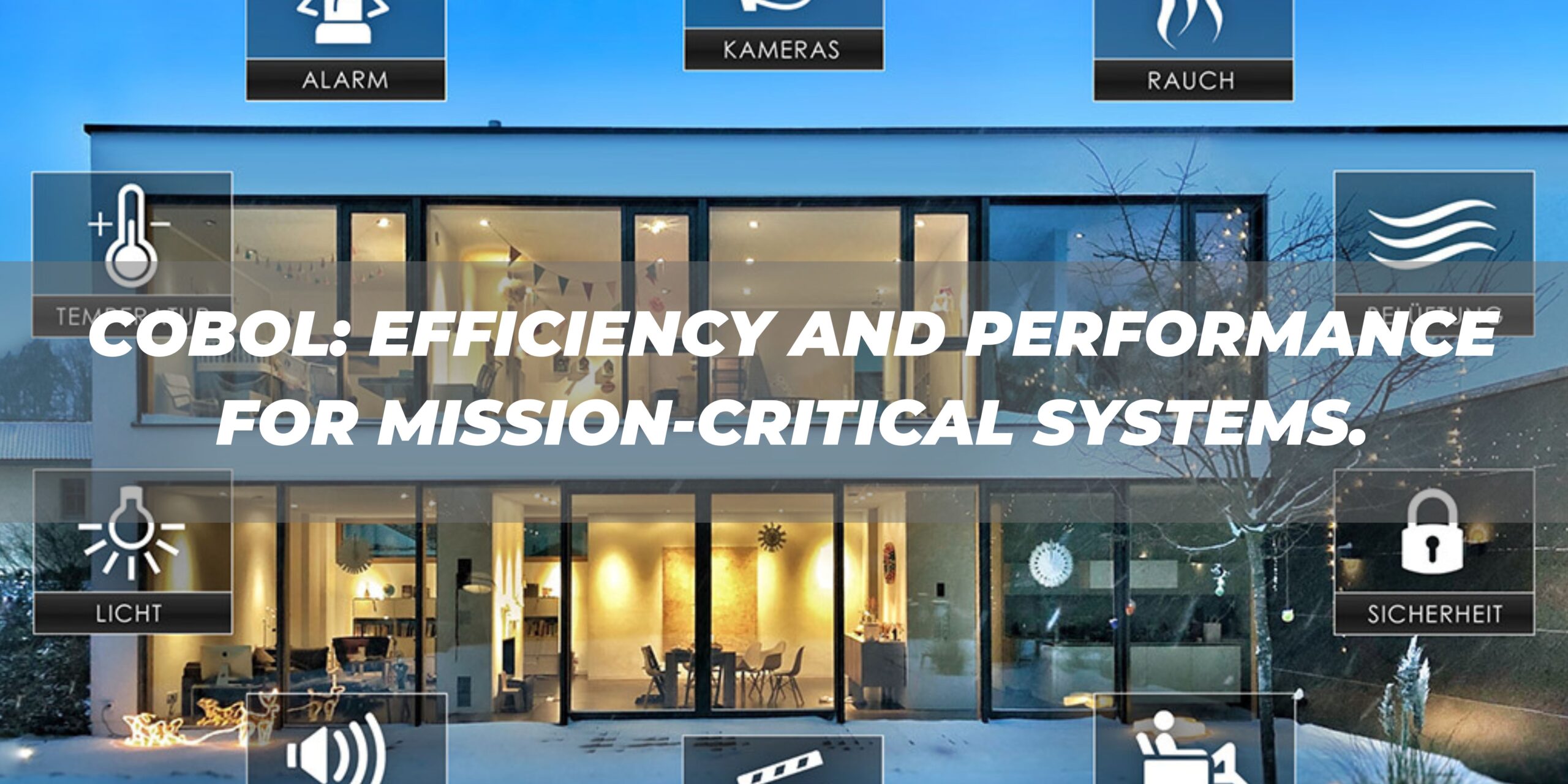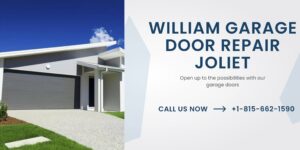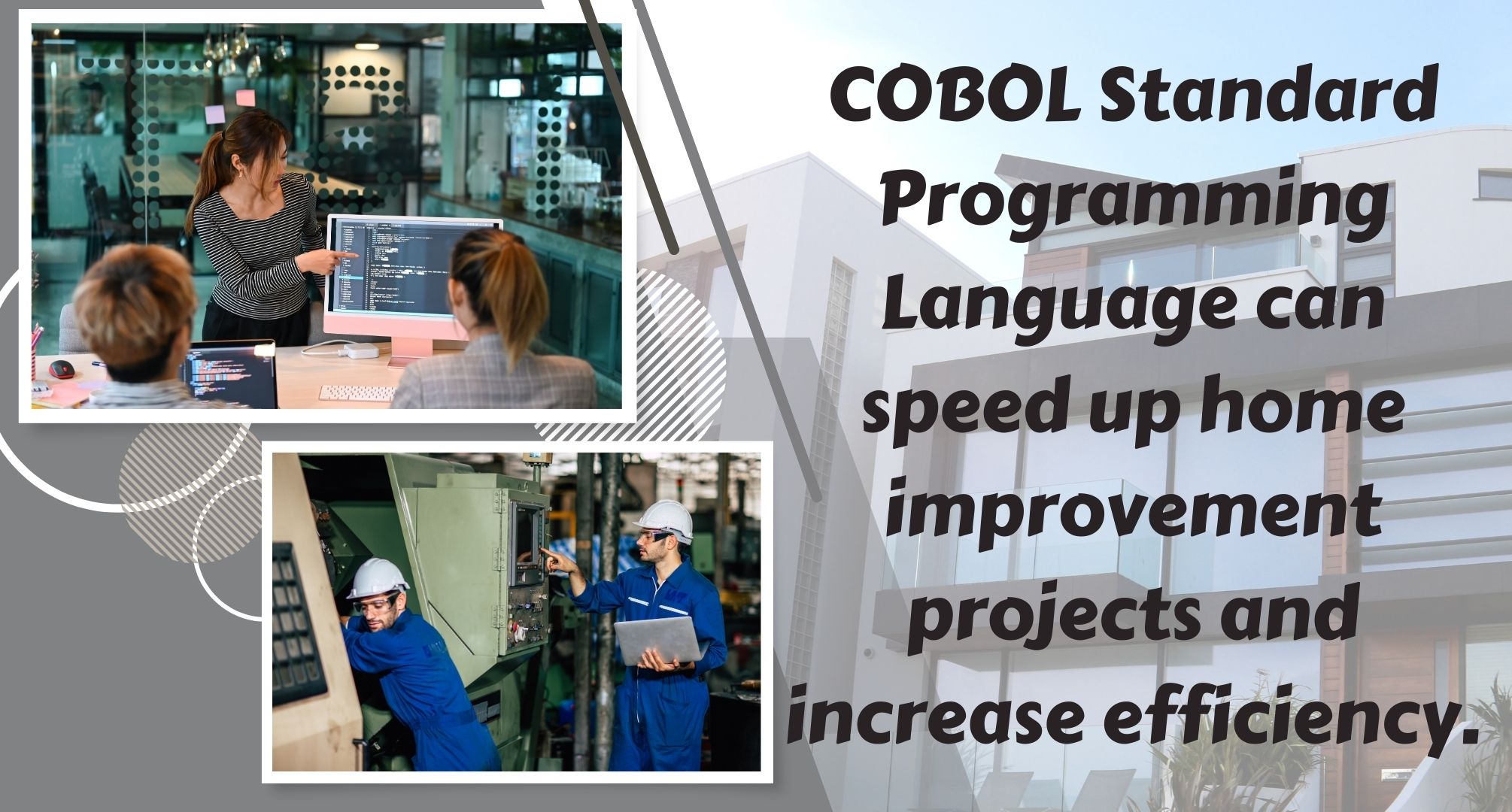The incorporation of technology has significantly changed the home renovation sector in recent years. Home improvement businesses are now able to streamline their operations and give their clients better services because to the growing usage of digital tools. COBOL is one innovation that is causing a stir in the home improvement sector. The computer language known as COBOL, or Common Business Oriented Language, is very popular in the finance sector. In this essay, we will examine the significance of COBOL implementation in the home improvement sector, as well as its advantages, difficulties, and potential uses.
COBOL’s Role in Home Improvement
Contractors, designers, architects, and consumers are among the many stakeholders in the fiercely competitive home renovation sector. With so many moving pieces, it’s essential to have a solid system in place to keep track of home renovation projects, control spending, and guarantee computation accuracy. Implementing COBOL can aid in overcoming these difficulties by enhancing data tracking efficiency for home renovation projects, enhancing computation accuracy for home repairs, and minimizing human error and oversight.

Data tracking efficiency for home improvement projects
Many different duties that are involved in home renovation projects call for careful monitoring and coordination. Implementing COBOL can offer a consolidated method for monitoring the status of projects, including work finished, resources consumed, and funds allocated. Home improvement pros may plan effectively and allocate resources by having access to real-time data. This can decrease delays and enhance project management in general.
Increased Calculation Accuracy for Home Repairs
In the home improvement sector, where even minor mistakes can result in huge financial losses, accurate calculations are essential. A system for completing calculations relating to home repairs, such as calculating the cost of goods and labor, can be provided by the implementation of COBOL. Calculations may be carried out with a high degree of accuracy, lowering the possibility of mistakes and oversights, thanks to the built-in data validation and error-checking capabilities of COBOL.
Reduction of oversights and human errors
Any industry is always concerned with the human dimension, and the home renovation sector is no exception. Home improvement projects run a significant risk of human errors and oversights due to the number of stakeholders involved. Implementing COBOL can help by automating repetitive operations like data entry and calculations, which can help lower the chance of errors. Home remodeling specialists may therefore be able to concentrate on jobs that are more important and call for their experience and judgment.
Implementing COBOL to Improve Your Home
For home improvement projects, COBOL implementation entails choosing the right COBOL software, integrating it with current home improvement systems, and training and educating home improvement specialists on COBOL implementation.

Making the Right COBOL Software Choice for Home Improvement Projects
There are many COBOL software options on the market, and each has different features and functionalities. Considerations including interoperability with current home improvement systems, usability, and scalability are crucial when choosing COBOL software for home renovation projects. Working with a vendor who has knowledge in the home improvement sector and can offer sufficient help throughout the implementation process is also essential.
Integration of Home Improvement Systems with COBOL Software
In order to adopt COBOL, existing home improvement systems like project management and accounting software must be integrated. Due to the need to ensure system compatibility and data consistency, this can be a difficult task. Working with an accomplished implementation team is crucial since they can offer sufficient help throughout the integration process and take care of any issues that might crop up.
Education and Training for COBOL Implementation for Home Improvement Professionals
Home remodeling specialists need to be instructed on how to operate the new system efficiently if they are to get the full benefits of COBOL installation. Data entry, computation, and data analysis using COBOL software are all covered in this program. To ensure that home renovation experts are at ease using the new system and can take advantage of its capabilities to better their job, it is imperative to offer continuing assistance and training.
Benefits of Using COBOL for Home Improvement
The home renovation sector can gain a lot from the use of COBOL, including better project management and scheduling, greater data analysis and reporting, and more precise cost estimates and budgeting.
Enhanced Project Scheduling and Management
With the deployment of COBOL, home improvement specialists may monitor project progress in real-time, spot potential bottlenecks, and make wise resource allocation and scheduling decisions. By reducing delays and enhancing project management, this can raise client happiness and boost profitability.
Improvements in Data Analysis and Reporting
Home renovation specialists can spot patterns, developments, and anomalies in their data by implementing COBOL, which can offer comprehensive data analysis and reporting capabilities. This can aid in better decision-making, offer understanding of consumer behavior and preferences, and point out operational flaws.
More Reliable Budgeting and Cost Estimates
In the home renovation market, where even minor mistakes can result in large financial losses, accurate cost estimates and budgeting are essential. A system for completing calculations relating to home repairs, such as calculating the cost of goods and labor, can be provided by the implementation of COBOL. Home improvement contractors may be able to manage their budgets more skillfully and provide their clients with more precise cost estimates as a result.
Implementing COBOL Faces Challenges and Limitations
Although implementing COBOL can benefit the home renovation sector in many ways, it is not without difficulties and constraints. These include the demand for specialist COBOL know-how, difficulties integrating with existing home improvement systems, and expensive initial implementation costs.
Need for Expertise in Specialized COBOL
Because COBOL is a specialized programming language, its implementation needs skill. Home renovation businesses who lack the funding or internal COBOL expertise to engage outside professionals may find this difficult. Working with seasoned implementation partners who can offer the required knowledge and assistance throughout the implementation process is crucial.
Challenges with Legacy Home Improvement Systems for Integration
Many home improvement businesses rely on antiquated technology that might not work with modern COBOL programs. Due to the need to ensure system compatibility and data consistency, this might make integration difficult. Working with an accomplished implementation team is crucial since they can offer sufficient help during the integration process and take care of any issues that might crop up.
Costly initial implementation
The deployment of COBOL may entail a sizable time and resource commitment. This covers the price of choosing and putting COBOL software into use, integrating it with current systems, and instructing and training home renovation specialists. It is crucial to thoroughly assess the prospective return on investment and compare it to the upfront costs of implementation.
Future COBOL Home Improvement Applications
Implementing COBOL has the ability to further alter the home improvement sector. Future COBOL applications in the home improvement sector include increased automation and process streamlining, integration with cutting-edge technologies like artificial intelligence and machine learning, and investigation of novel use cases for COBOL in the sector.

Additional Automation and Simplified Home Improvement Procedures
Implementing COBOL can automate repetitive operations like data input and calculations, freeing contractors to concentrate on more important jobs that call for human skill and judgment. This could result in even more process simplification for home repair projects, cutting down on delays and raising client satisfaction.
Adaptation to New Technologies like Machine Learning and Artificial Intelligence
Artificial intelligence and machine learning can be linked with COBOL implementation to offer advanced data analysis and reporting capabilities. This can assist home improvement businesses in finding trends and patterns in their data, giving them insights into the behavior and preferences of their customers and pointing out operational flaws. Better client experiences and more individualized services may result from this.
Examining New COBOL Use Cases in the Home Improvement Sector
Beyond project management and cost estimation, COBOL implementation has a wide range of uses in the home renovation sector. It can be used, for instance, for supply chain optimization, quality control, and inventory management. Companies can further profit from COBOL’s advantages and enhance their operations by looking at new use cases for it in the home improvement sector.
Case Study: Effective Use of COBOL in Home Improvement
The instance of a significant home improvement retailer who installed COBOL software to manage its inventory and supply chain serves as an illustration of effective COBOL deployment in the home improvement sector. The business used COBOL to manage orders, keep track of inventories, and streamline supply chain processes. As a result of the implementation, inventory costs were significantly reduced, customer satisfaction rose, and profitability increased.
Conclusion
Implementing COBOL has the potential to change the home improvement sector by enhancing project management, cost estimation, and data analysis accuracy and efficiency. Although implementing COBOL presents some difficulties and constraints, the advantages outweigh the drawbacks, and businesses who adopt COBOL will be better positioned to thrive in the quickly developing home renovation sector. The potential for COBOL in the home improvement sector is limitless when it is combined with cutting-edge technologies and novel use cases.



























